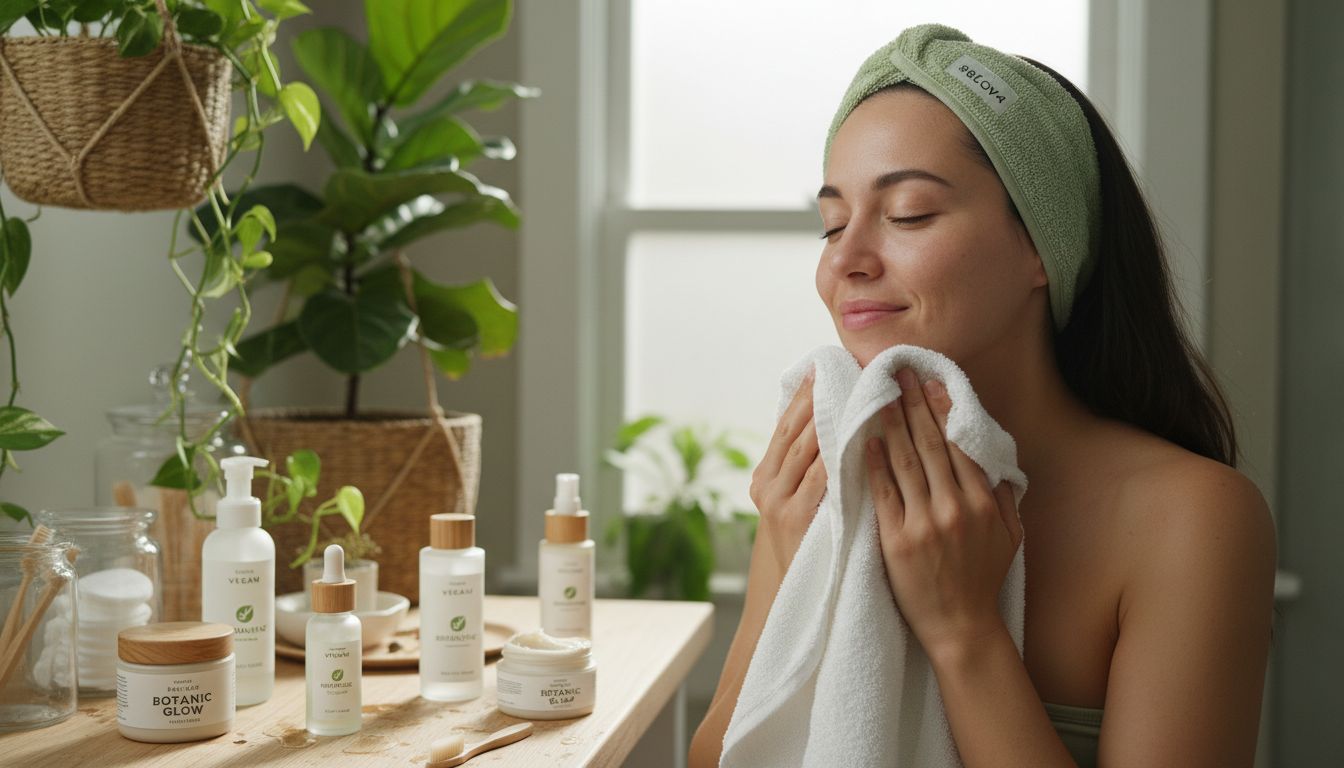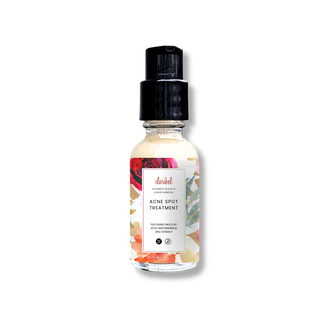Nearly 40 percent of americans report confusion about which skincare products truly match their needs. Choosing the right vegan skincare routine is more than just reading a label. It starts with understanding your unique skin type and specific concerns so you avoid wasting time and money on ineffective formulas. This practical guide lays out simple steps to help you build an ethical, personalized routine that actually works for your skin and your values.
Table of Contents
- Step 1: Assess Your Skin Type And Concerns
- Step 2: Select Vegan And Cruelty-Free Products
- Step 3: Prepare Your Skin With Gentle Cleansing
- Step 4: Apply Targeted Treatments And Serums
- Step 5: Moisturize And Lock In Hydration
- Step 6: Verify Results And Adjust Your Routine
Quick Summary
| Key Insight | Explanation |
|---|---|
| 1. Assess your skin type accurately | Evaluate your skin type and concerns to select effective vegan products tailored to your needs. |
| 2. Choose vegan and cruelty-free products | Research products to ensure they are free from animal-derived ingredients and have cruelty-free certifications. |
| 3. Cleanse gently and effectively | Use sulfate-free, plant-based cleansers to maintain your skin’s natural balance and prepare it for further treatments. |
| 4. Apply targeted treatments correctly | Apply serums and treatments on clean skin using the appropriate order and techniques to enhance their effectiveness. |
| 5. Regularly evaluate and adjust your routine | Monitor your skin’s response to products and adjust your routine every 6-8 weeks for optimal results. |
Step 1: Assess your skin type and concerns
Understanding your unique skin profile is the critical first step in developing an effective vegan skincare workflow. According to the Oregon Health Authority, your skin type can be determined by examining key characteristics like your natural eye color, hair color, and baseline skin tone before sun exposure.
To conduct a comprehensive skin assessment, use the detailed analysis framework from Welcome Home Vets NJ, which categorizes skin into five primary types: normal, oily, dry, combination, and sensitive. Your evaluation should include a thorough visual inspection focusing on specific concerns such as:
- Texture irregularities
- Presence of acne or breakouts
- Redness or inflammation
- Pigmentation changes
- Fine lines and wrinkles
Pay attention to how your skin responds to environmental factors and lifestyle choices. Some individuals might notice increased sensitivity during seasonal changes or after using certain products. A meticulous self assessment empowers you to select targeted vegan skincare solutions that address your specific needs.
When in doubt, consider consulting a professional esthetician who can provide a precise skin type diagnosis and personalized recommendations for your unique skin profile.
Step 2: Select vegan and cruelty-free products
Choosing ethical skincare products that align with your values requires careful research and intentional selection. According to PETA, the key is identifying brands that have completely banned animal testing and use exclusively plant-based ingredients.
As recommended by Ethical Consumer, look for products that meet these critical criteria:
- Zero animal-derived ingredients
- Explicit cruelty-free certifications
- Transparent manufacturing processes
- Documented commitment to animal welfare
When shopping, scrutinize product labels carefully. Look for recognized certifications like Leaping Bunny or PETA’s Beauty Without Bunnies logo, which guarantee no animal testing occurred during product development. Digital resources like Cruelty Free Beauty: Everything You Need to Know can help you navigate the complex world of ethical skincare.
Remember that true vegan skincare goes beyond avoiding animal testing it means selecting products with zero animal-derived ingredients. This commitment protects animals while delivering powerful natural skincare solutions that are kind to your skin and the planet.
Step 3: Prepare your skin with gentle cleansing
Gentle cleansing is the foundation of any effective vegan skincare routine, creating a clean canvas for subsequent treatments. PETA recommends selecting cleansers that are not only vegan and cruelty-free but also specifically formulated to respect your skin’s natural balance.
When choosing a cleanser, focus on these key characteristics:
- Sulfate-free formulations
- Plant-based ingredients
- pH balanced
- Free from harsh chemicals
- Suitable for your specific skin type
As highlighted in PETA’s summer beauty essentials guide, seasonal changes can impact your skin’s needs. For more detailed insights, check out our Face Cleansing Treatment: Finding the Right Cleanser article to help you navigate the nuanced world of gentle cleansing.
Remember to cleanse morning and night using lukewarm water and gentle circular motions. Pat your skin dry with a clean towel rather than rubbing, which can cause unnecessary irritation. Your skin will thank you for this mindful approach to cleansing.

Step 4: Apply targeted treatments and serums
Targeted treatments and serums are the precision instruments of your vegan skincare routine, addressing specific skin concerns with concentrated plant-based ingredients. PETA highlights the importance of selecting vegan retinol products that effectively target aging and texture concerns without compromising ethical standards.
When applying treatments and serums, follow these essential guidelines:
- Apply to clean, slightly damp skin
- Use lightweight formulas first
- Gently pat or press into skin
- Allow each layer to absorb completely
- Use only a pea sized amount
According to insights from the Middle East Vegan Society, vegan skincare brands are developing increasingly sophisticated treatments that address multiple skin concerns simultaneously. For precise application timing recommendations, explore our guide on when to apply face serums.
Pro tip: Layer your treatments from thinnest to thickest consistency, allowing each product to absorb fully before applying the next. This approach maximizes ingredient effectiveness and prevents potential product interactions.
Step 5: Moisturize and lock in hydration
Locking in hydration is the final fortress protecting your skin from environmental stressors and maintaining its radiant glow. PETA recommends selecting vegan moisturizers that not only hydrate but also provide comprehensive protection without compromising ethical standards.
When applying your moisturizer, follow these strategic techniques:
- Apply to slightly damp skin
- Use upward circular motions
- Focus on areas prone to dryness
- Dont pull or drag skin
- Extend application to neck and decolletage
PETA’s guide on vegan retinol products suggests incorporating night moisturizers with active ingredients to supercharge overnight skin repair. For a comprehensive approach to selecting the perfect moisturizer, explore our guide to natural skin moisturizers.
Pro tip: Pay special attention to your skins unique needs. Some areas might require extra hydration while others need a lighter touch. Your moisturizer is the final seal that locks in all the nourishing benefits from your previous skincare steps.

Step 6: Verify results and adjust your routine
Consistent skin health requires ongoing assessment and thoughtful adaptation of your vegan skincare approach. Welcome Home Vets NJ provides an excellent skin analysis chart that enables you to systematically track and document your skincare journey.
To effectively verify and adjust your routine, implement these strategic evaluation techniques:
- Photograph your skin monthly
- Note visible texture changes
- Record environmental factors
- Track product effectiveness
- Monitor skin hydration levels
According to the Oregon Health Authority, periodically reassessing your skin sensitivity can reveal important shifts in your skincare needs. Some skin changes might signal the need for formula adjustments or entirely new approaches.
Pro tip: Be patient and scientific in your approach. Meaningful skin transformations typically require consistent routines maintained over 6 to 8 weeks. Your skin is unique its response to products will be equally distinctive.
Discover Your Perfect Vegan Skincare Match for Radiant Skin
Struggling to find vegan skincare products that truly fit your skin type and address your unique concerns like dryness, oiliness, or blemishes can feel overwhelming. This article highlights the importance of understanding your skin profile and using gentle, plant-based ingredients that deliver real results without toxic fillers or animal testing. Your goal is to build a clean, effective routine that locks in hydration and targets problem areas safely.

Ready to experience a skincare transformation grounded in purity and performance Choose from our expertly curated collections like Dry for hydration balance or Blemish Prone solutions designed to calm and clarify. All our products are cruelty free and formulated with the most sought after active ingredients for healthy, radiant skin. Start your journey today at Claribel Skincare where everything ships free in the US. Your skin deserves honest care without compromises.
Frequently Asked Questions
How do I assess my skin type for vegan skincare?
To assess your skin type, examine your natural eye color, hair color, and skin tone before sun exposure. Consider using a skin analysis chart to categorize your skin type as normal, oily, dry, combination, or sensitive.
What ingredients should I look for in vegan skincare products?
Look for products that contain zero animal-derived ingredients and are free from harsh chemicals. Verify that they have ethical certifications, indicating they are cruelty-free and contain only plant-based ingredients.
What are the best practices for gentle cleansing in my vegan skincare routine?
For effective gentle cleansing, use sulfate-free, pH-balanced cleansers that are suitable for your skin type. Cleanse your face morning and night with lukewarm water and gentle circular motions to maintain your skin’s natural balance.
How do I apply targeted treatments and serums correctly?
Apply targeted treatments to clean, slightly damp skin, starting with lightweight formulas and gently patting them into your skin. Use only a pea-sized amount and allow each layer to absorb completely before adding the next.
How can I determine the effectiveness of my vegan skincare routine?
Track your skincare journey by photographing your skin monthly and noting visible changes. Evaluate your skin’s response to different products and environmental factors, allowing for adjustments every 6 to 8 weeks as needed.
What should I do to lock in hydration effectively?
To lock in hydration, apply moisturizer to slightly damp skin using upward circular motions. Focus on dry areas and remember to extend the application to your neck and decolletage for comprehensive coverage.
Recommended
- 7 Vegan Skincare Staples Every Woman Needs to Know
- Budget Friendly Vegan Skincare: Step-by-Step Routine Guide
- How to Choose Vegan Skincare Naturally for Best Results
- 7 Top Vegan Skincare Tips for Healthy, Glowing Skin
- Clean Beauty Routine Steps for Sensitive, Radiant Skin – Pure Light Botanical Beauty



